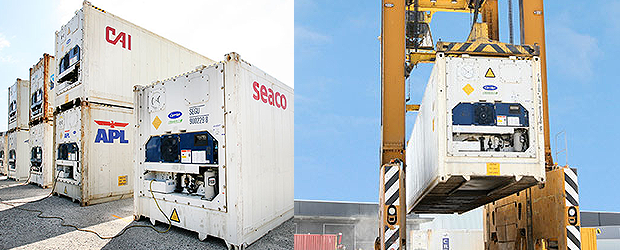
In designing a high-quality storage container, engineers are faced with a handful of tough challenges. Finite though these obstacles may be, they still require advanced solutions. There's the knowledge that the container is facing adverse external forces, shipping conditions that would crush lesser products. Inside the container, refrigeration and precise climate control is everything. A freight ship could be climbing the waves of a tropical storm where humidity and high temperatures are turning shipboard cabins into sweltering torture chambers, yet the interior of the reefer has to remain icy.
The scenario is exactly the same when the container is attached to a truck or locomotive. All of those refrigerated containers are being hit by the hot desert sun or humid rain-forest air, yet none of these compromising environmental factors can touch the inner calm of the refrigeration management system. The components that determine this sealed barrier begin with the structural integrity of the container.
Steel alloys with superior durability features and heightened corrosion resistance characteristics represent the mainstay of intermodal shipping. This accepted model rules the industry, yet there are, as always, exceptions to the rule. As robust as steel is within this tough environment, reefer manufacturing has to account for other factors. Aluminium, a specially selected graded variant of the lightweight metal, is considered the logical choice in this application. The reasoning behind this material change is simple. The walls on a reefer are thicker and contain insulating panels, thus adding weight to the profile of the ISO container. Weight is a characteristic that equals added cost within the intermodal equation. Aluminium is the natural solution to the cost issue because of its lighter but still robust material profile.
An impenetrable shell and a marine-grade plywood floor keeps quality high and weight low, but it's time to move the focus of the study away from passive cooling and over to active refrigeration. The temperature management system of the reefer integrates powerful cooling features and commanding anti-humidity monitoring technology, layering these features within a physical enclosure of sealed insulation. Weatherproof and guaranteed to support cooling integrity, the insulant delivers a superior R-value while supporting international efforts to phase out CFC heavy ingredients. New foams with polymeric components that focus on heat isolation while maintaining a lightweight profile are taking the place of fibreglass and older materials. Meanwhile, state-of-the-art refrigeration units are delivering never before seen energy savings, advanced internal climate monitoring features, and humidity eliminating mechanisms that go beyond simple temperature control. Some models have even made a move to substitute liquid nitrogen fuelled systems in place of inefficient refrigerant models, thus incorporating precision temperature management for the most demanding applications.
The supplemental effects of these designs are many. The use of aluminium in place of steel, for instance, allows for greater flexing and joint expansion during transient temperature changes.
| After Hours: | Danny 0408 488 114 |
Optimized by NetwizardSEO.com.au